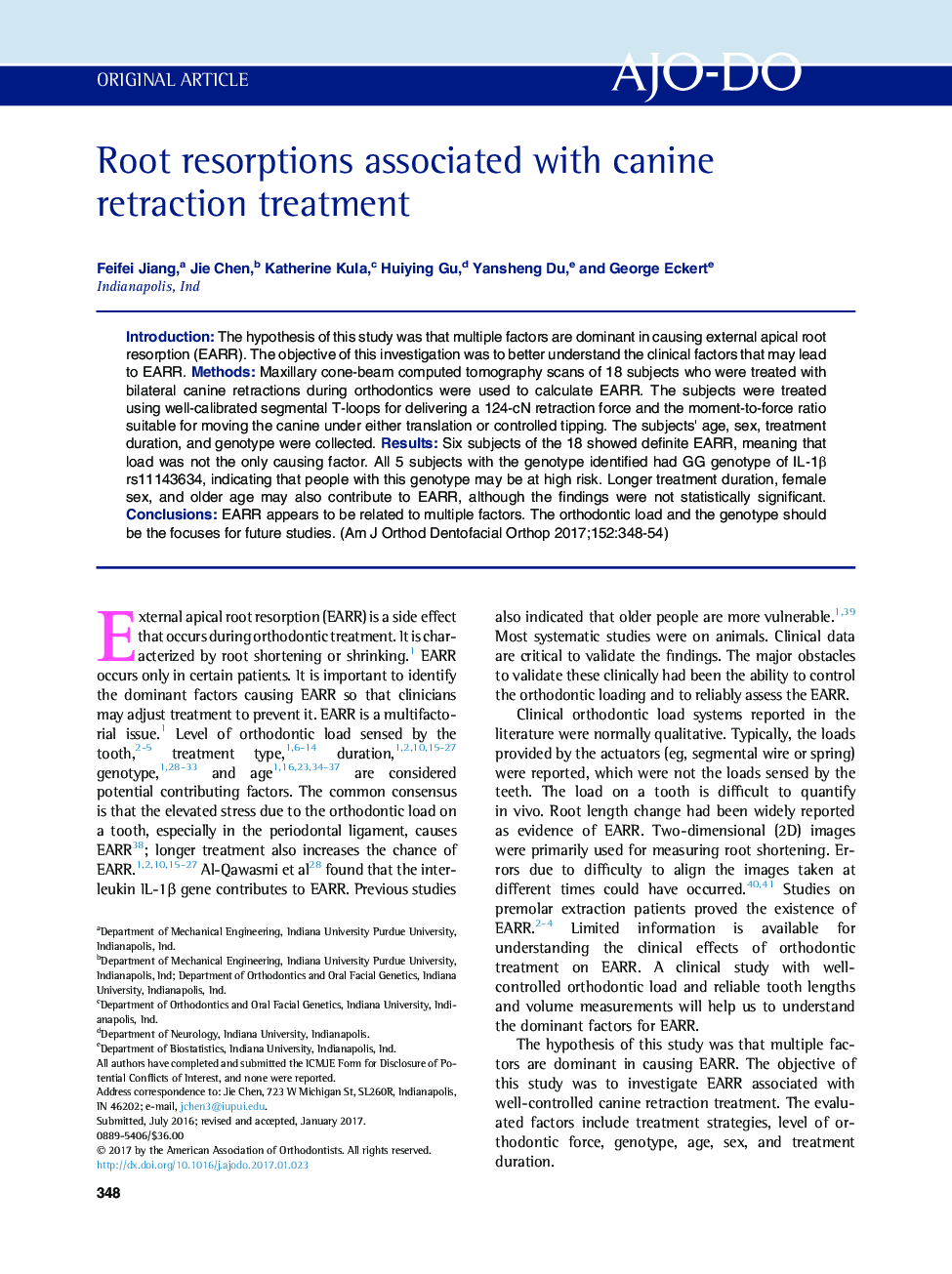| Article ID | Journal | Published Year | Pages | File Type |
|---|---|---|---|---|
| 5637451 | American Journal of Orthodontics and Dentofacial Orthopedics | 2017 | 7 Pages |
â¢Canine retraction under a retraction force of 124 cN may result in EARR.â¢The teeth with no orthodontic load do not have EARR.â¢Orthodontic force alone is not sufficient to cause EARR.â¢High-risk factors for EARR may be older age, female, longer treatment time, and high moment-to-forceratio.â¢Patients with GG genotype of IL-1β rs1143634 might also be at higher risk for EARR.
IntroductionThe hypothesis of this study was that multiple factors are dominant in causing external apical root resorption (EARR). The objective of this investigation was to better understand the clinical factors that may lead to EARR.MethodsMaxillary cone-beam computed tomography scans of 18 subjects who were treated with bilateral canine retractions during orthodontics were used to calculate EARR. The subjects were treated using well-calibrated segmental T-loops for delivering a 124-cN retraction force and the moment-to-force ratio suitable for moving the canine under either translation or controlled tipping. The subjects' age, sex, treatment duration, and genotype were collected.ResultsSix subjects of the 18 showed definite EARR, meaning that load was not the only causing factor. All 5 subjects with the genotype identified had GG genotype of IL-1β rs11143634, indicating that people with this genotype may be at high risk. Longer treatment duration, female sex, and older age may also contribute to EARR, although the findings were not statistically significant.ConclusionsEARR appears to be related to multiple factors. The orthodontic load and the genotype should be the focuses for future studies.
